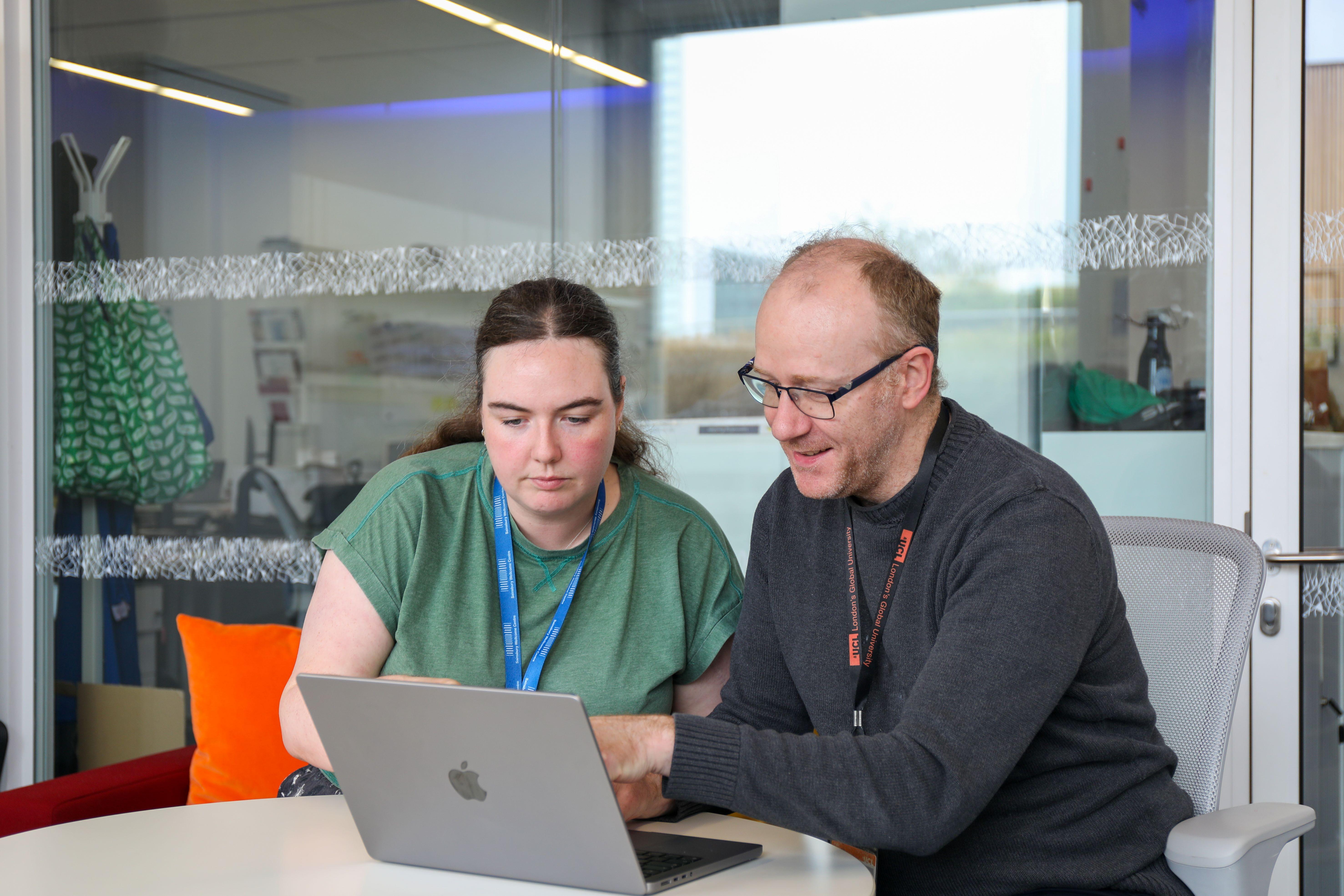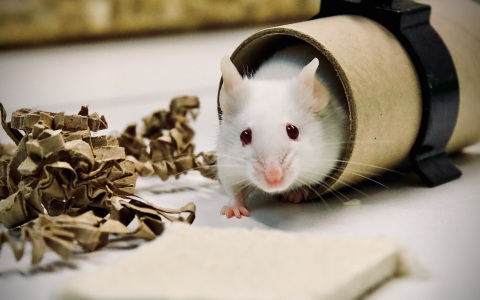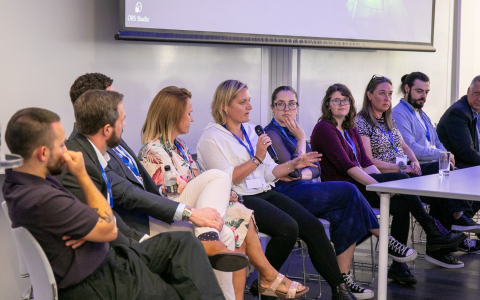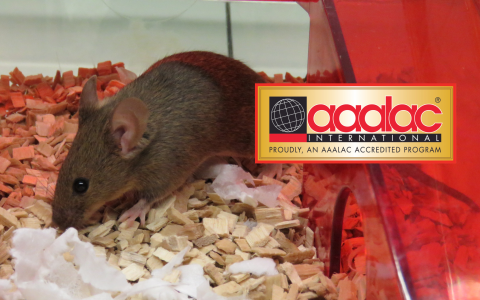
Centralising training in animal research
Training in animal research is often complex, as facilities must meet strict legal and ethical requirements as well as ensure staff competence and animal welfare. At the Sainsbury Wellcome Centre, a centralised framework for training is tackling this challenge, bringing together standardised tools, digital platforms, and close collaboration between researchers and animal care staff.
The framework has drawn strong interest from other institutes, with several visiting the SWC to see the approach in practice. Earlier this year, the SWC team presented the framework at the Institute of Animal Technology Congress.
Dr Eleni Amaniti, Head of the NRF, led the team behind the development of the model, which is now set out in detail in a new publication as a case study for others to adopt. The paper “Building training and competence through collaboration: a case study of a centralised training framework in animal research” has just been published in Animal Technology and Welfare.
Building a training system
The new system builds on 10 years of work at the Sainsbury Wellcome Centre, and covers all procedures regulated by The Animals (Scientific Procedures) Act 1986 (ASPA).
The principles of the training framework at SWC have remained the same over that time - structured mentorship, using ‘standardised direct observation of procedural skills’ (DOPS) for training and assessment and regulatory compliance.
What has changed is the strategy and the digital platforms for documentation, communication systems and record-keeping that are in place. Originally, record-keeping was done using individual documents and local digital records, but the team have since moved to new, centralised software and databases. Everyone has a clearly defined role, whether they are a mentor, mentee, or observer.
Dr Christophe Galichet, Research Operations Manager of the Neurobiological Research Facility (NRF) and Elena Ghirardello, Standards and Licensing Manager at SWC were both key to developing the training framework.
“Training and competency processes can at times feel excessively bureaucratic, laborious to system users, and slow to adapt to changes in research. The processes we have at the SWC aim to cut through the noise: providing a user-friendly system in which everyone contributes their specialist knowledge and skills to training and competency matters. Successful training and competency processes underpin good animal welfare, which ultimately aids good science being done, all under the umbrella of strong legislative compliance,” says Elena.
Christophe adds his advice for others who may be thinking about updating their own systems: “Fundamentally, I think the important thing is communication. Engage in conversations not just with compliance officers and senior management but also with scientists and animal care staff who are the backbone of this work. We were only able to introduce this system because we had their support at SWC.”
Eleni described how the approach requires collaboration at all levels of the organisation.
“This training framework is not the product of one person or one moment - it is the outcome of the commitment, expertise, and persistence of many people over many years. It has been developed with researchers, the support of the executive team, and, of course, NRF staff. Everyone has contributed their part, and the process was not always easy - difficult discussions, thoughtful comments, and critical feedback all played a crucial role in shaping and refining the framework. This paper stands as a celebration of the successful outcome of this ongoing collaboration.”

Elena Ghirardello and Christophe Galichet.
Benefits of a centralised approach at SWC
The framework means that compliance with ASPA is straightforward, says Elena. “Having all of our documents and our processes centralised means that everything's just where you need it, as you need it. It also enables us to introduce quality control measures throughout our processes, ensuring that we maintain consistent and high-quality standards of training, competency, and record-keeping throughout the SWC.”
But the centralised approach goes beyond meeting legal requirements. It is also helping to maintain the highest levels of animal welfare and scientific support. A standardised system allows the team to be robust, and transparency means that expectations are clear.
While the system is specific to SWC, Christophe describes how their work may benefit other institutes and facilities; “We feel that it's a good case study to show how collaboration between animal technologists and scientists can go a long way.”
Adaptability
From discussions with other facilities, the NRF team understood that some feared a standardised system would reduce flexibility - but their experience has shown the opposite.
Codifying every step, from mentoring and DOPS templates to digital workflows, means there is a comprehensive process map that is easy to update. If a project or new regulatory guidance requires something to change, then staff can easily identify steps, revise training content or observation criteria, and implement changes across the system.
What’s next?
“The paper is not the end. This work is always a live entity where there's constant communication between all the parties involved, and there is always room for improvement,” says Christophe.
Christophe recently spoke about the work at the Training the Trainer meeting, to share the team’s approach.
Eleni adds, “and now, it’s starting to take on a life of its own. We'll see how things go from here!”


